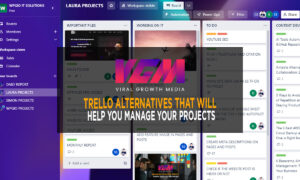If you’re reading this, it’s probable that you’ve heard of APIs but are unsure of what they are or how to utilize them. We’ll provide you with an introduction to APIs and instructions for getting started in this blog post. We’ll go through the fundamentals of APIs, how they operate, and some typical use cases. You’ll have a fundamental grasp of how to utilize an API by the end of this tutorial, and you’ll be prepared to start creating your own!

What is an API?
The application programming interface is referred to as API. A set of guidelines and procedures known as an API enables the communication between software programs. In other words, it’s a method for communicating with and exchanging data among various software applications.
There are APIs everywhere! You use an API whenever you use your smartphone to check the weather, reserve a hotel stay on your preferred travel site, or make an online purchase. You probably utilize an API if you include a third-party service or piece of software in your project.
Why Should You Use an API?
Thanks to modern technologies, we have instant access to immeasurable data. In the past, you had to hunt through various folders on your computer or even filing cabinets to find a particular document. With databases, however, you need to send a fast query, and the results will show immediately.
Your company’s CRM system, like Salesforce, has the information you’re looking for in its cloud storage. You’ll probably need to use an API to access it.
APIs can be used to create applications that search and reformat data stored on a server and enable data-driven decision-making. An excellent illustration of this is the Google Maps API, which allows businesses like Uber to use as-is rather than creating their web mapping platform.
Although they may appear an unnecessary burden, APIs are designed to improve data security and the simplicity with which you can obtain the information you need to make wise business decisions. Usefulness, however, varies. It may be intimidating to use an API if you are not an IT specialist.

Top API management tools
Check out our best API administration solutions list to learn more about them.
-Mulesoft’s
Use Mulesoft’s Anypoint Platform to quickly design, test, and publish API products. You can manage APIs, track and analyze usage, manage access, and secure critical data using access controls and security policies. With the aid of Anypoint API Community Manager, which enables self-service API documentation, forums, support, and customized resources for developers to be successful, portals may be transformed into digital experiences that convert developers into evangelists.
-Software AG’s
WebMethods API Management from Software AG is an end-to-end solution that lets you control every step of planning, designing, creating, and safely opening up your APIs to outside developers. By utilizing your current SOA investments for new API projects, this toolchain enables you to increase the value of your assets while saving time and money on training and development.
-IBM API Connect
You can quickly secure and manage your whole API ecosystem across different clouds with market-leading IBM API Connect, which also helps you increase socialization and monetization initiatives. Using IBM API Connect, a comprehensive, user-friendly, scalable API platform, you can design, expose, control, and monetize APIs across clouds. This means that APIs can fuel digital apps and advance technology for you and your clients. API developers can work more quickly thanks to streamlined processes and an integrated toolbox.
-Kong
Kong offers comprehensive insight and enables application team members to deliver dependable security and organization for APIs and services. This makes it possible for your development teams to include clear security policies and traffic that harmonize with using APIs and services. Additionally, using artificial intelligence, you can automatically check the traffic for any anomalies to spot performance or security concerns before they occur.
-Axway
APIs can be used, for instance, to link a software program with a platform or end-user device. APIs can also make HTTPS safe access possible. The most popular way to connect media and apps is through APIs, enabling mobile developers to build native mobile applications that run directly on a user’s device without requiring intermediate client-side code modifications.
Axway’s API Gateway offers a complete platform for managing, distributing, and protecting APIs. Web API and SOA-based systems offer integration, acceleration, governance, and security. Axway provides comprehensive lifecycle API management for the upcoming generation and automates the discovery, reuse, and control of all your APIs across various gateways, environments, and vendor solutions.
-Postman:
Postman makes communicating easy and simplifies each phase of the API development process, allowing you to speed things up. With just a few clicks, you can easily send REST, SOAP, or GraphQL requests within Postman. To prevent any code changes from breaking the API in production, you may also automate manual tests and incorporate them into your CI/CD workflow. Additionally, verify your API’s performance and response times at regular intervals to stay informed about its condition.
-Cloud Elements:
The first API integration platform, Cloud Elements, eliminates brittle point-to-point connections by combining data from several APIs into unified data models. You receive much better cost performance and scale when your data is the focal point of a customized Application Ecosystem, allowing you to explore new opportunities, experiences, and ideas.
-SAP Integration Suite
You can create, publish, promote, and manage APIs in a secure and scalable manner with the help of SAP API Management. It gives developer communities the potential to monetize data and digital assets in new channels by enabling them to benefit from them on new devices, UIs, and channels. You can encourage more fruitful collaboration across the whole business ecosystem by employing real-time analytics to keep an eye on APIs on various data platforms. API Management encourages co-creation among staff, partners, and the developer community by managing and monitoring APIs across diverse data platforms with real-time statistics.
-Workato
Workato is a centralized platform that enables app integration and process automation while upholding security and governance. You can quickly increase growth by prioritizing automation throughout your organization. It allows companies to receive results from commercial events in real time. The system uses unique technologies and machine learning to generate automation ten times faster than competing platforms; no coding is required.

How Do APIs Work?
You probably use APIs more frequently than you realize. For instance, many websites now let you sign in using your Facebook or Google account. Giving consumers the option to pay using Paypal is another common API feature. You’ve likely used an API if you’ve ever ordered travel online or checked the weather on your phone.
You have used an API if you checked any of those boxes. They serve as communication instruments. Imagine that there are three steps in the process of using one:
- User: The person who submits a request
- Client: The user who sends the server a request.
- Server: The person’s computer that handles requests.
Your role as a user is simple; all you need to want to do is something, whether it’s retrieving previous sales data from a CRM system or monitoring the weather.
You must launch the CRM system, other application, or client to access the information you need. Depending on the API you’re using, there are many ways to submit this request. For instance, while using a weather app, you can tell the API which city’s weather forecast you want to see, and it will collect the most recent data from its sources. Similarly, you would say that you wish to all of the sales records for a given product over five years at your Chicago locations if you needed sales data from a CRM system.
The server, which receives and processes your request, holds the data you’re looking for. The documentation describes the structure of its endpoints, which are its constituent parts and contain detailed data. The architecture of an API tells how it is broken up or what it is made up of.
Let’s look at two of the most common types of API architecture.
-SOAP APIs
Data exchange between client and server is accomplished via the Simple Object Access Protocol or SOAP. With this architectural design, XML facilitates communication between the client and the server. Many still use SOAP APIs because of their rigid architecture and independence from any particular language. Today, SOAPI is still used by many companies.
-REST APIs
Representational State Transfer is referred to by the acronym “REST.” As part of a REST API, the client and server may communicate with one another using XML, but they are not limited to that language. This kind of API is more flexible by design. Think of it as a style guide rather than a strict guideline.
Even if you’ve been studying APIs, the terms RESTful API and REST API are sometimes used synonymously. There are only a few key differences, but they matter a lot. A RESTful API is comparable to a REST architecture implementation in that it embodies every aspect of the design idea.

What Does an API Do?
An API allows two computers to communicate with one another. The language to be used has been predetermined by the server, which also maintains the data. The client utilizes this language to ask the server for information. An Overview of Servers, Clients, and APIs A server in computer networking is a device in charge of offering some services to other devices (clients) on behalf of users. These services are often administered by servers that run the software, anticipating requests from clients who require them, but they can also receive unsolicited messages or events (webhooks).
Although they are the most critical component of many technical activities, APIs have minimal vocabulary and grammar. Four different types of actions can be given to an API:
- GET: The client asks the server for the desired data by sending a request.
- POST: When a client submits data to a server, a different client may edit that data and send it back to the same server.
- PUT: The material in this text is updated or expanded upon.
- DELETE: Get rid of outdated information by doing so.
The endpoints and these verbs often referred to as HTTP actions, allow you to query or update any available data via an API. Look up the API docs to learn how to implement these operations; each is distinct.
API Calls
An API call consists of three stages: the client’s request, the server’s acquisition of the desired data, and the client’s transmission of that data. Your first API request is the only thing you need to be concerned about. You’ll do this by utilizing the server’s Universal Resource Indicator and HTTP verbs like getting and POST (URI). Think of the URI as the server’s equivalent of an address. They won’t get your message if you don’t give them their specific email address. For servers, the same is true.
Including a header in your request is critical so the computer can comprehend it as best as possible. This will give the server the necessary information to provide the appropriate answer. You won’t receive an appropriate response if you don’t comprehend this.
Finally, an API key is probably certainly required. Think of it as a password that gives you access to both the server and the requested data. You will be given a unique string of letters and numbers when using the API rather than merely supplying your email and password. If you want to understand more about authentications and authorizations, read this.
-Status codes
The numerical code you receive will let you know the status of your request. You can assume your request was granted if it begins with a 2. Code 4 typically denotes an issue on our end.
However, the status code not only informs you of the success or failure of your request but also offers details regarding the answer or any issues that may have arisen.

Start Using an API
Many of the APIs available to organizations are made for moving data from one software into the equivalent fields of another. This is extremely useful when you communicate information that requires repetitive entry, like importing leads from your marketing automation program into your CRM.
Accessing an HTTP client, such as REST-Client, Postman, or Paw, is the easiest way to start using an API. These pre-made tools can help you submit queries to active APIs. You won’t require much technical knowledge, but you will still need to be familiar with some of the documentation’s suggested syntax. If you don’t have any prior programming experience, that’s fantastic news.
Making a URL out of the documentation already available is the best method for getting data out of an API. This YouTube tutorial shows how to utilize the Google Maps API to collect position information and use the resulting coordinates to identify adjacent Instagram photographs.
What are the different types of APIs?
A collection of guidelines for communicating with an application is known as an application programming interface (API). Although APIs are used in numerous fields, software development is where they play a vital role. API is a translator between two systems, enabling effective communication and data sharing. Over time, many types of APIs have developed to allow for companies to add online capabilities outside of their websites and software.
-Public APIs
Public APIs, usually referred to as open APIs, are APIs that are freely accessible to all users. Data requests from any firm using a public API are open to everybody. Available APIs are a crucial part of mobile applications and a convenient interaction point for numerous websites. A fantastic illustration of a commonly used public API is Google’s Maps APIs.
-Private APIs
A software vendor typically uses a closed, private API within its infrastructure. Internal APIs are generally proprietary and are only utilized within the protected network of the firm. Most businesses use internal APIs to exchange data with various internal business applications, including financial systems, enterprise resource planning (ERP), and customer relationship management (CRM).
-Partner APIs
A partner API enables data sharing between two independent businesses. Businesses give vendors API access to data streams to access more features or services. This strategy allows for interactions between companies and developers that would not be possible otherwise.

Types of API Architectures and Protocols
-REST API
The REST (Representational State Transfer) architecture has a straightforward user interface that enables component communication (clients and servers). It only employs a small number of clearly defined operations, each of which accepts standard parameter forms.
One of its essential characteristics is that this access method doesn’t maintain any state information. This implies that each request includes all the necessary information to carry out its task. REST can be helpful for CRUD tasks like creating, reading, updating, and removing data because these calls don’t maintain track of the state. These operations, which correspond to the HTTP methods GET, POST, DELETE, PUT, and PATCH is frequently used in web-based REST APIs.
REST API Use Cases
- Use on the web: REST APIs often give users a new method to interact with websites because they are made to be consumed by browsers. Stateless, cacheable, and discoverable web services frequently employ them.
- Cloud provisioning: To enable customers to only pay for what they use, cloud providers must find a solution to the issue of precisely tracking infrastructure resources. Many do this using REST APIs to streamline billing and resource management processes.
- Cloud apps utilize CREST APIs since they don’t rely on the state and can run on any platform. Additionally, server-side components are required to manage these requests and responses since the way users access them differs from conventional browser-based operations (such as completing a form or clicking a button).
- Enterprise apps: Some programmers use apps within a particular business and frequently rely on open APIs. Several companies publish their internal services as REST APIs, so third parties can access them. They do this to encourage cooperation amongst various teams or divisions.
-SOAP API
These documents, typically used in web services and allowing two systems to communicate by passing data back and forth across the internet via a network connection, communicate between systems through a SOAP (Simple Object Access Protocol) API. These files are most frequently produced in XML (eXtensible Markup Language). The rigorous and rule-based SOAP APIs specify how your application should communicate with external systems. When it comes to command handling, rules, and validations, they are very stringent.
SOAP API Use Case
Although SOAP offers greater security by giving users complete control over how data is shared with third parties, its complexity is less user-friendly than RESTful APIs.
-RPC API
A remote procedure call, often known as an RPC, is a form of computer communication in which one machine requests data from another. You can call any remote operation using this API and get results. To put it another way, RPC can be used to make client or server calls as needed.
RPC API Use Cases
- Programmability for client/server has been made simpler.
- On-demand load balancing with on-demand scalability
- applications that can operate across networks and in a range of contexts
- Simply changing settings without distributing new clients enables development to occur more quickly, easily, and affordably.
-GraphQL API
With GraphQL, you can request data from an API and get a detailed description. Clients no longer have to order more than they need, thanks to GraphQL. Furthermore, GraphQL APIs are simpler to expand over time, enabling robust developer tools.
GraphQL API Use Cases
- Flexibility and scalability: If one API fails, the entire system breaks, which is undesirable for organizations or apps. But GraphQL is supported by a scalable server that can accommodate thousands of users concurrently without taxing the infrastructure. As a result, GraphQL responds more quickly than previous systems.
- Improved data integration: Using GraphQL to isolate data from its back end, developers can spend more time designing exceptional user experiences and managing messy integrations less.
- Support for different platforms: GraphQL enables the use of a single query across various platforms.

Top 5 API Platforms
-CA API Management
Not only does CA API management connect systems, but it also modifies services, constructs enterprise-grade APIs from a variety of sources, and orchestrates data. Additionally, removing roadblocks during development, it reduces the time required to design an API. Users of the platform can collaborate on projects and use the integrated mobile software development kits (SDKs).
-Azure API Management
A cloud-based solution called Azure API Management provides serverless management for APIs. This makes publishing these interfaces to clients inside and outside the company simple. The platform may be used to manage any microservices you have, just like APIs. Azure offers a variety of unique use models explicitly designed for you to make life even more straightforward.
-Akana API Management
End-to-end management solutions for the Akana platform take care of everything, including data translation and security, administration, and publication. Akana encourages affiliate approval and data monitoring, which improves digital outreach.
-Tyk API Management
Tyk is a platform for managing APIs featuring an API gateway, developer dashboards, and customer dashboards.
-AWS API Gateway
Amazon’s API Gateway is a service that lets developers create, publish, monitor, and secure APIs. Through the gateway, you might benefit from APIs on the Amazon Market.

How to Make API calls?
1. Find the URI of the external server or program:
Before performing an API request, you must first identify the Uniform Resource Identifier (URI) of the server or external program whose data you desire. This is essentially a home address in the digital world. If you don’t have this, you won’t be able to figure out where to send your request.
For instance, HubSpot’s URI consists of various endpoints, each with its own path. For instance, real-time public tweet streaming would provide both the base path and the endpoint, which you could include in your request or add to the end of the base path.
2. Add an HTTP verb:
You must first remember the URL that will allow you to view the data. Once you’ve located it, figure out how to phrase your request. The four most basic request verbs are as follows:
- GET: To acquire something
- POST: Visit the website and select “Create New Resource” from the list of advertising options.
- PUT: Navigate to the Manage Your Resources panel to edit or update an existing resource.
- REMOVE: To remove a resource
3. Include a header:
The header, which tells the API about your request and the response you anticipate, should come next. A title guarantees that the API comprehends your request and answers in an expected, clear, and simple manner. Three frequent headings are accepted content-type and user-agent. Let’s go over each one in turn below.
-User-Agent
A user agent string represents the User-AgentString value. It includes details about the user agent, such as the operating system and browser, and occasionally the version number or other information. This header enables servers to determine the user agent’s application, operating system, vendor, and/or version.
-Content-Type
The “Content-Type” header specifies the type of data transmitted in the request. For instance, it can state that the request was submitted in JSON or XML format. Without this header, the API can receive your request and not know what it is or how to decode it. As a result, you won’t get a response.
-Accept
The format you want the API’s response to is specified in this header. Without this flag, the API might deliver the requested data in XML even though you asked for JSON or the other way around.
Keep in mind that an API might not provide the specified data format. You will nonetheless get an answer. Always include this header in your API call to enhance the likelihood of receiving the precise response you desire.
4. An API key and access token are similar in purpose:
They serve as a means of identifying API calls. An API key or access token is used to track usage and billing data and approve or deny requests based on the client’s access permissions. It comprises a string of letters and numbers that identifies the client application making the request.
5. Wait for a response.
Now, you can wait for a response after sending the API call. You may determine from the status code whether the request was processed correctly or not. Don’t worry if things don’t work out. Additionally, the status code will describe the problem so you may fix it and try again. There are typically two types of status codes: 2XX (“success codes”) and 4XX (“error code”). Here are a few of the most typical:
2XX Codes
These codes demonstrate that the server successfully received and processed the client’s request.
- Your request has been granted.
- When a POST request is made, and the resource has been created on the server, the response code 201 Created is usually returned.
- 202 Accepted: The request has been received and is still being processed.
- No material will be provided, but the request has been processed.
4XX Codes
The customer is informed by these codes if there is an issue with their request. It’s possible that the requested resource doesn’t exist, or there is a problem with the request’s formulation.
- There is an issue with the client’s request, as indicated by the error code 400.
- You are not permitted to submit this request. Therefore, we apologize.
- Although the request is valid, we cannot complete the operation due to a 403 Forbidden error. The client probably doesn’t have the required permissions.
- The requested resource isn’t there, according to the 404 error code.
Choosing the Right API Vendor for Your Business
A vast range of platforms becomes available once you use the correct tools. Even though the two devices may have similar principles, they may have completely distinct foci. For instance, specific APIs might be superior at developer interaction and analytics, while others might excel at security and total life cycle management.
Several criteria, such as pricing, support options, and vendor reputation, must be considered when choosing an API integration solution. How well the solution will interact with the overall architecture of your firm is another critical issue to consider.

What is API Documentation?
A technical writer created the API documentation, in which they thoroughly described how to use an API and provided examples. It demands a thorough understanding of the API, its arguments, return type, supported languages, and user interfaces. Technical writers usually possess programming knowledge while creating instructions, methods, and examples for APIs preinstalled with software applications.
Conclusion
At first, APIs may seem scary, but with some assistance, you can begin utilizing them in your applications. The fundamentals of how APIs operate and several typical use cases were discussed in this article. Check out our other tutorials on using APIs if you’re searching for more details on where to begin. Gratitude for reading!























